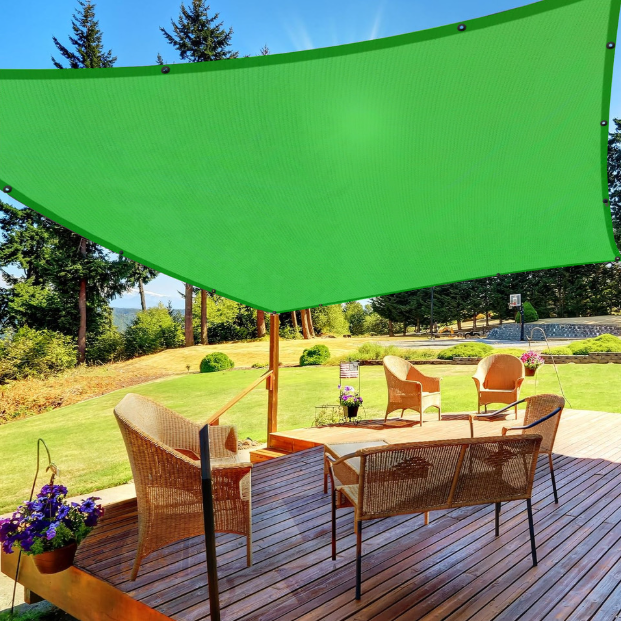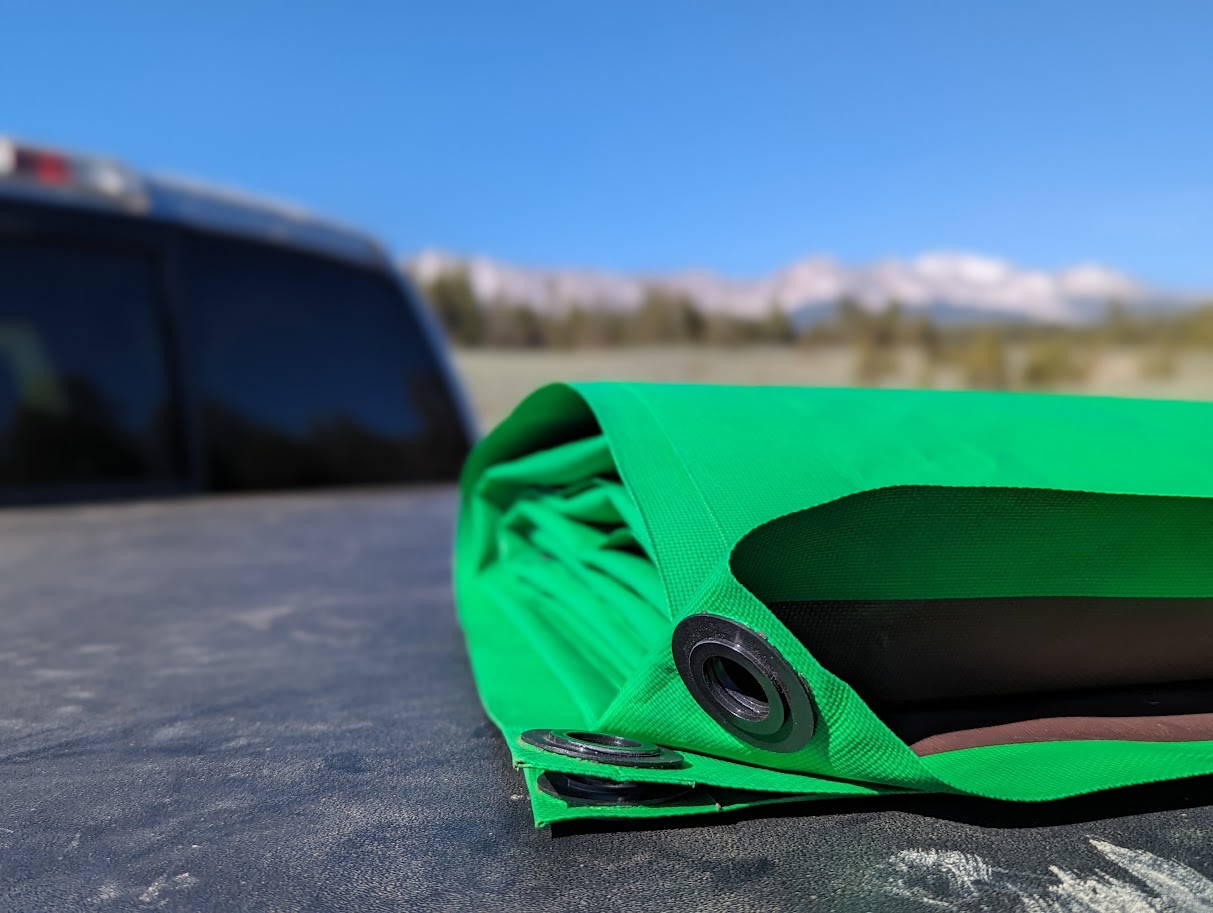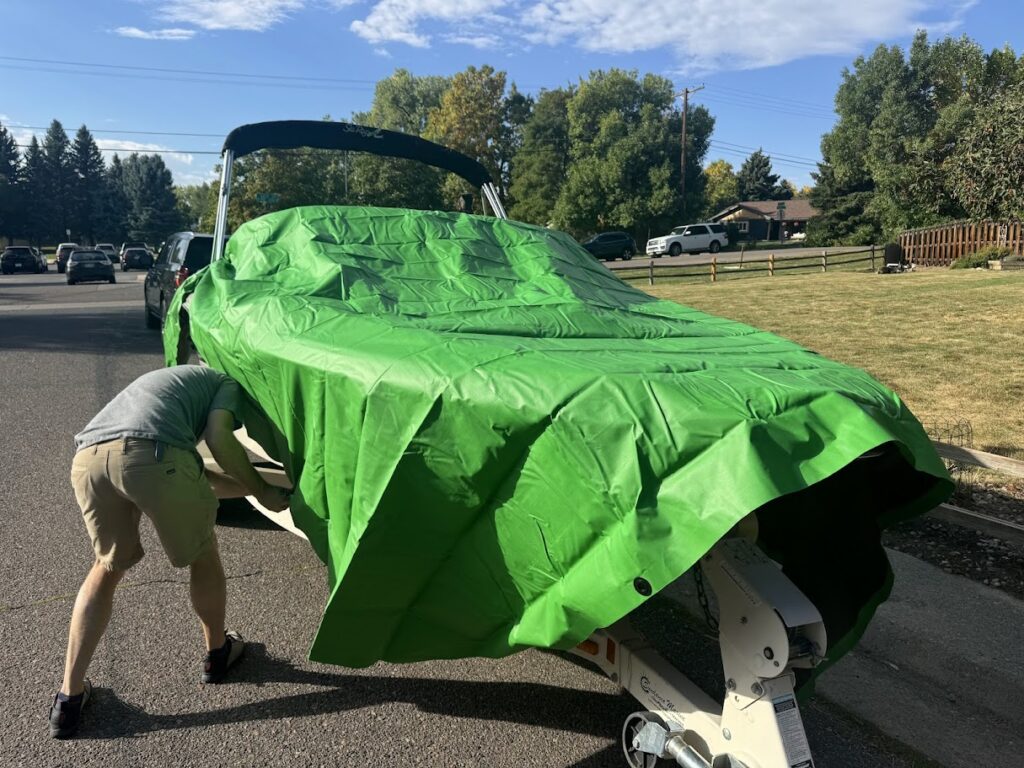
A quality tarp cover is one of those simple products that quietly does an incredible amount of work. It can:
- shield gear from punishing sun
- keep your space dry when the weather turns
- help your setup stand strong against the elements
Yet most people only realize how important it is after watching a “bargain” option shred or crumble under exposure to the elements.
The dirty secret? Most tarps are not built for real-world conditions. Many are made from low-grade materials that tear, stretch, or deteriorate far too soon.
Choosing the right cover means understanding which products last longest outdoors, how construction details like hems and grommets impact longevity, and why saving a few dollars upfront can cause more frustration later.
This guide will show what separates reliable products from the ones that fail when you need them most. You’ll learn which materials work best, how to size correctly, and which Renegade products fit your goals.
Whether you’re covering equipment, shading a workspace, or managing storage, you’ll find clear answers for choosing a tarp cover that performs season after season without regrets.
What Makes for a Superior Tarp Cover? 9 Criteria to Look For Before You Buy
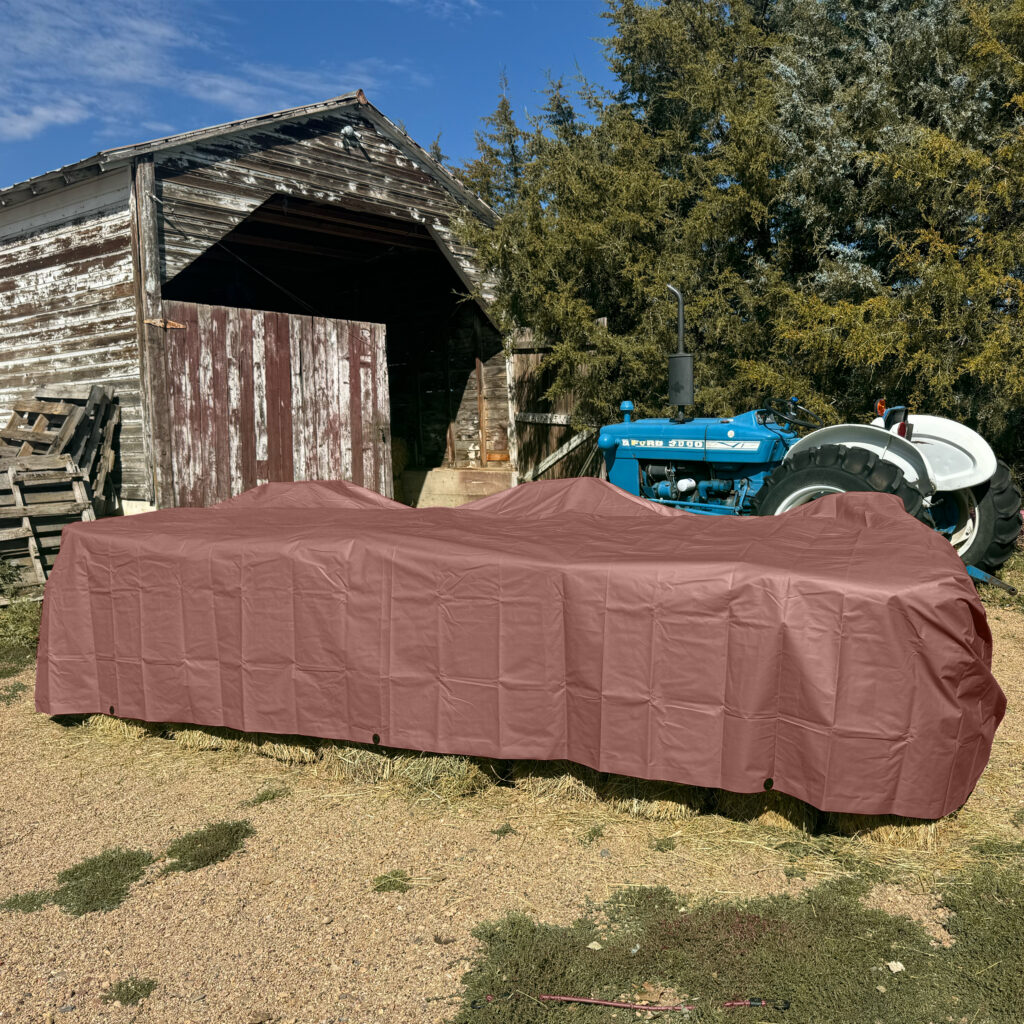
Buying the right cover starts with knowing what truly matters. Too many budget versions skip critical features that determine how long your products last when exposed to the elements.
- Thickness / Weight
The thicker the fabric, the more puncture-resistant it becomes. A dense weave improves tear prevention without unnecessary weight. Typically measured in mil (thousandths of an inch) or ounces per square yard (mm and grams per square meter outside of the U.S.) - UV Stabilization / Additives
Constant sunlight breaks down defenseless materials. Look for UV-stabilized options that stay flexible and resist fading. - Reinforced Edges and Hems
Double-stitched or welded edges help your cover stay intact under strain, especially in windy locations. - Grommet Quality, Spacing, and Reinforcement
Grommets distribute force evenly. Rust-proof, reinforced styles keep tension consistent and prevent tearing. - Tensile, Tear, and Puncture Resistance
Materials with high tensile strength handle tension without stretching or cracking, keeping your setup secure through changing conditions. - Proper Sizing for the Job
A cover that’s too small strains at tie points. One that’s too large can flap or collect water. Always measure and leave a few inches for tie-downs. - Water Resistance and Moisture Management
The best covers repel moisture while resisting mold and mildew growth. - Recycling and Return Policy
Smart design should also mean smart disposal. Renegade products can be recycled through our return program, reducing landfill waste. - Strength-to-Weight Ratio
A well-balanced cover offers durability without bulk. It should be easy to handle yet strong enough to last through tough weather.
Comparing the 5 Main Types of Tarp Cover Materials (1 Has the Most Benefits & Fewest Trade-Offs)
Each cover material performs differently under heat, sunlight, and moisture. Understanding those trade-offs helps you select the best product for your needs.
| Material | Weight/Durability | Water Behavior | UV Resistance | Toxicity | Best Uses |
| Polypropylene | Moderate weight; high tensile strength; excellent tear resistance | Fully waterproof; resists mildew and moisture absorption | Excellent UV stability | Non-toxic; No PVC, PFAS*, plasticizers or heavy metals | All-purpose outdoor use, roofing, equipment covers, long-term protection |
| Vinyl/PVC | Heavy and durable; strong but can crack in cold temperatures. | PVC polymer coating makes it waterproof | Surface treatment is UV resistant but can wear down over time | Contains toxic plasticizers and additives, potentially including heavy metals | Industrial use, truck covers, long-term storage, containment |
| Canvas/Cotton | Heavy; moderate durability; can weaken over time | Absorbs moisture; prone to mold and rot | Poor to fair | Non-toxic | Painting, shade covers, indoor or temporary outdoor use |
| Mesh/Hybrid | Lightweight; variable strength depending on weave | Breathable; allows airflow but not waterproof | Good | Non-toxic if made from acrylic, but PVC versions have the same problems as vinyl/PVC | Shade, privacy screening, windbreaks |
| Blue Poly /Polyethylene (PE) | Lightweight; low durability; prone to tearing | Waterproof, but cheaper versions degrade quickly when exposed to UV. | Fair | Non-toxic, but degradation releases microplastics into environment | General purpose, temporary covers, short-term projects, camping |
Most traditional tarp materials force you to choose between durability, safety, and sustainability. But Renegade’s coated polypropylene fabric solves that trade-off.
It offers the strength of industrial vinyl with the non-toxic and recyclable properties of polyethylene, while maintaining flexibility that makes it easy to use day after day. It’s engineered to handle extreme UV exposure, resist tearing, and stay waterproof without relying on harmful additives or coatings.
12 Situations/Environments Where You Need a (Robust) Tarp Cover
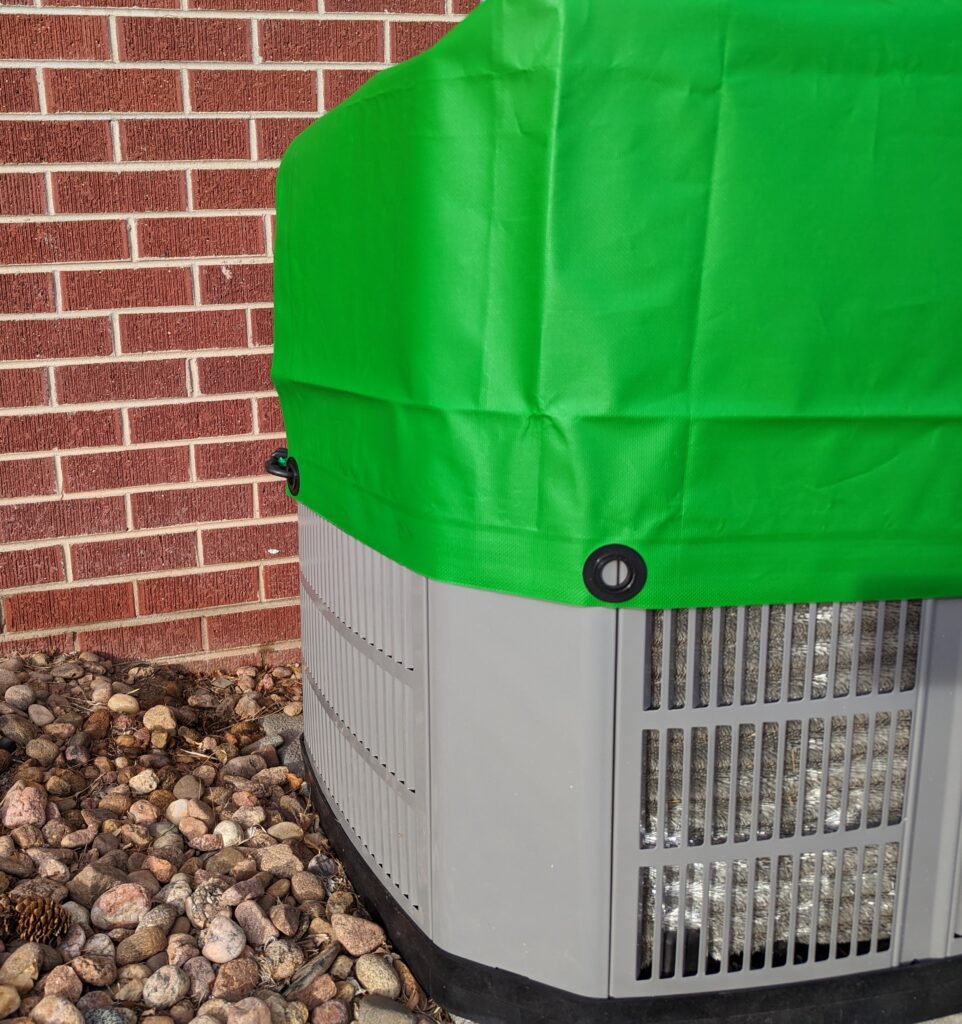
A dependable cover can make almost any setup more durable, whether at home, on a job site, or outdoors. Here are a few of the most common (and some surprisingly creative) uses:
- Roofing and Storm Damage Protection
Cover damaged areas after storms or leaks to prevent further water intrusion until repairs can be made. - Building Materials (Lumber, Steel, etc.)
Shield raw materials from rain and UV exposure while keeping job sites organized and efficient. - Firewood or Bulk Wood Storage
Keep logs dry and ready for use by sheltering stacks from rain, snow, and ground moisture. - Outdoor Furniture and Patio Sets
Extend the life of furniture and cushions by keeping them safe from UV rays, rain, and pollen. - Gardening and Frost Protection (Ground or Crop Use)
Create quick frost covers or ground barriers to retain soil warmth and moisture. - Greenhouse Cover or Shade Extension
Use as an affordable alternative to full greenhouse panels or to add adjustable shade zones. - Equipment or Machinery Cover
Shield tools, mowers, and small tractors from dust, rust, and UV degradation during off-season storage. - Boat, RV, or Vehicle Protection
Safeguard vehicles from UV rays, bird droppings, and precipitation during long-term parking. - Camping, Gear Shelter, or Rainfly
Build a reliable camping canopy or quick-dry shelter that’s portable and easy to set up anywhere. - Truck or Trailer Loads (Consumer Use)
Secure light-duty, non-commercial, loads during transport to keep cargo dry and protected from wind or debris. - Agricultural and Farm Use (Hay, Feed, Grain)
Cover harvested materials or animal feed to reduce spoilage and contamination. - Emergency or Disaster Relief Applications
Use as a quick shelter or ground barrier for relief operations, field kitchens, or community aid stations.
A tarp cover’s usefulness goes far beyond the typical “throw it over something” mindset. With proper setup and maintenance, a single tarp can serve as long-term protection for equipment, shade for outdoor work, or reliable coverage during critical moments when you need it most.
How Do You Select the Correct Size Tarp Cover for Your Situation?
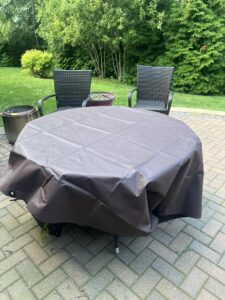
Choosing the proper tarp cover size is just as important as picking the right material. Too small, and it won’t secure properly. Too large, and it can flap, sag, or collect water… shortening its life.
Here’s how to size your tarp for reliable coverage every time:
- Measure your space carefully
Always measure the full length, width, and height of the item or area you plan to cover. Add a few inches for tie-down points and overhang.
- Leave smart slack
A little extra fabric helps absorb tension from wind and prevents tears. Aim for about 6–12 inches of overhang per side.
- Match material and thickness to your environment
Thicker, UV-stabilized products perform better in long-term, outdoor settings. For short-term projects or shaded areas, a lighter-grade option may suffice.
- Layer for added protection
Use an underlayment, like a ground pad, when placing tarps over abrasive or uneven surfaces.
- When in doubt, size up
It’s easier to secure extra material than to stretch one that’s too small.
These 7 Recommended Tarp Cover Models Fit the Bill for Almost All Consumer Needs
Finding the right dimensions is easy with Renegade’s Contractor Grade lineup. Whether you’re prepping for backyard projects or commercial-scale coverage, these products make choosing simple.
| Model / Size | Best Use Cases | Max Coverage / Span |
| 8′ × 6′ Contractor Grade Tarp Cover | Small backyard projects, tool/equipment covers, patio furniture, small firewood stacks | ~48 sq ft coverage |
| 10′ × 8′ Contractor Grade Tarp Cover | Garden beds, weed prevention, roofing repair patch, truck bed cover, small machinery cover | ~80 sq ft coverage |
| 12′ × 9′ Contractor Grade Tarp Cover | Lawn care, mid-size furniture, motorcycles, small construction sites | ~108 sq ft coverage |
| 10′ × 10′ Contractor Grade Tarp Cover | Square setups (camping shelters, roof patching, utility protection) | ~100 sq ft coverage |
| 20′ × 12′ Contractor Grade Tarp Cover | Truck loads, roof protection, farm equipment, larger wood piles | ~240 sq ft coverage |
| 44’ x 22’ Contractor Grade Tarp Cover | Construction projects, large-scale weather shielding, agricultural coverage | ~968 sq ft coverage |
| 60’ x 40’ Contractor Grade Tarp Cover | Industrial yards, warehouse or field coverage, large roofing or disaster relief | ~2,400 sq ft coverage |
When you’re ready to buy, you can add a Renegade tarp directly to your cart through our online store. Each size is engineered for maximum strength-to-weight performance, recyclable at the end of its life, and backed by a 30-day satisfaction guarantee.
This means you can cover with confidence.
9 Steps to Taking Care of Your Tarp Cover for Maximum Lifespan

Even the toughest cover performs best with a little care. Proper handling, cleaning, and storage can extend its life for years while keeping your gear protected from the elements. Follow these quick best practices to get the most out of your investment.
- Secure it properly.
Always tie down using the reinforced grommets (never through the fabric itself) to prevent tearing. - Distribute tension evenly.
Keep the cover taut but not overstretched to avoid stress around corners and anchor points. - Angle for drainage.
Set up your cover so water, snow, and debris can slide off instead of pooling on the surface. - Keep it clean.
Rinse away dirt and organic buildup with mild soap and water to prevent mold and mildew. - Store it right.
Once dry, fold neatly and store in a cool, shaded place away from sharp tools or chemicals. - Inspect regularly.
Check for wear after extreme weather and patch any small areas of abrasion promptly. - Recycle responsibly.
When your cover eventually reaches the end of its service life, send it back through Renegade’s take-back program for proper recycling. - Keep it stationary when possible.
Covers are built for static use. When exposed to continuous movement, such as during transport or flapping in strong wind, abrasion and surface wear are unavoidable over time. - Avoid contact with sharp edges or rough surfaces.
Prolonged rubbing or pressure points can cause premature wear. Use padding or smooth barriers under tie-downs or hard corners to prevent abrasion.
A few extra minutes of maintenance can mean years of dependable protection. It’s the simplest way to make sure your cover keeps standing up to the elements season after season.
Hear from the Experts: 9 Answers to Your Tarp Cover Questions
Even seasoned pros have questions when it comes to protecting their gear from the elements. Here are answers to the most common ones customers ask about choosing and maintaining a dependable cover.
- Are all tarps waterproof?
Not all. Many low-cost options repel light rain but leak under pressure or over time. Renegade covers are fully waterproof and engineered to stay flexible even after years of sun exposure. - How much slack should I leave on the edges?
Always leave a few inches of give when securing your cover. Too much tension can strain the seams and grommets, especially during wind or temperature shifts. - Can a cover prevent condensation underneath?
It helps, but no material fully eliminates moisture buildup. Proper airflow is key: secure your cover at an angle to promote ventilation and drainage. - Does color matter when choosing a cover?
Yes. Lighter tones reflect sunlight and heat, keeping surfaces cooler. Darker tones absorb more warmth, offering denser shade but slightly higher temperatures beneath. - Will a quality tarp cover last 3-5 years or longer?
Absolutely. With regular cleaning and correct setup, a high-performance cover can last well beyond that, maintaining UV protection and waterproof integrity through multiple seasons. - Can I walk on my tarp?
It’s not recommended. Walking can stress the weave and coatings, leading to premature wear. Always use boards or padding if temporary access is unavoidable. - Is the material safe and non-toxic?
Yes. Renegade covers are free from PVC, PFAS*, and BPA, meaning they’re safe for people, pets, and the environment while offering full protection from the elements. - What should I do if abrasion occurs?
Minor surface wear can happen, especially in windy or high-motion situations. Reinforce or patch worn spots promptly to maintain performance and prevent small issues from spreading. - When should I replace my tarp cover?
Replace it when the surface loses flexibility, seams start to fray, or it no longer holds tension. At that point, contact Renegade’s recycling program to responsibly return your retired cover.
Choose Our Ridiculously Durable Tarp Cover for Stronger Coverage & a Cleaner Planet

Not all protection from the elements is created equal. Renegade’s Contractor Grade Covers combine industrial strength with a lightweight feel, giving you serious performance without the bulk or the toxins. Every size we make is waterproof, UV-resistant, and crafted from materials that can be mechanically recycled that hold up beautifully under sun, rain, or wind.
When you choose Renegade, you’re getting more than reliable protection; you’re joining a movement that keeps materials out of landfills and working longer where they belong.
Explore the full range of Renegade Covers in our online store and add the right size to your cart today. Safeguard your projects, defend against the elements, and do it all with confidence that lasts season after season.
*(Made without intentionally adding per– and polyfluoroalkyl substances, may contain trace amounts.)
Interested in Our Fabrics?
Contact Us

